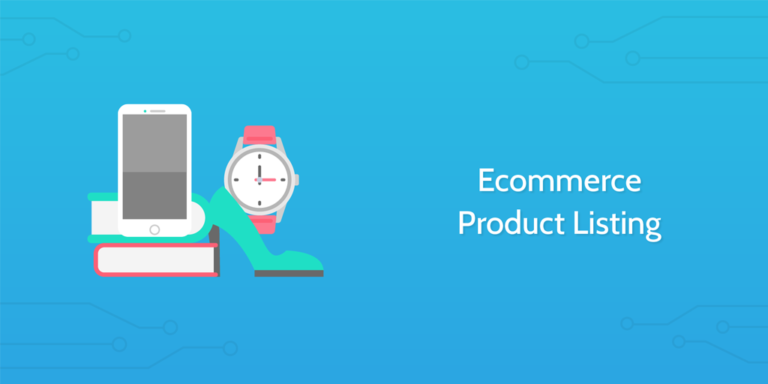Implementing Chatbots for Customer Service in Your E-Commerce Business
In today’s fast-paced digital landscape, customer service plays a pivotal role in the success of any e-commerce venture. With the ever-increasing demand for quick and efficient support, businesses are constantly seeking innovative solutions to enhance their customer service experiences. One such solution that has gained immense popularity in recent years is the implementation of chatbots.
Chatbots, powered by artificial intelligence (AI) and natural language processing (NLP) technologies, have revolutionized the way businesses interact with their customers online. These intelligent virtual assistants are capable of handling a wide range of customer inquiries and tasks, from providing product recommendations to processing orders and resolving common issues—all in real-time and with minimal human intervention.
In this comprehensive guide, we will explore the benefits of implementing chatbots for customer service in your e-commerce business, discuss best practices for integrating chatbots into your existing systems, and provide actionable tips for optimizing their performance to deliver superior customer experiences.
Understanding the Benefits of Chatbots for E-Commerce Customer Service
- 24/7 Availability: One of the most significant advantages of chatbots is their ability to provide round-the-clock support to customers, regardless of time zones or geographical locations. This ensures that your e-commerce business is always accessible to potential buyers, thereby increasing customer satisfaction and retention.
- Instant Responses: Chatbots can respond to customer inquiries instantaneously, significantly reducing response times compared to traditional customer service channels such as email or phone support. This swift response time enhances the overall shopping experience and can lead to higher conversion rates.
- Scalability: As your e-commerce business grows, so does the volume of customer inquiries. Chatbots offer scalability by efficiently handling multiple conversations simultaneously, without the need to hire additional support staff. This scalability ensures that your customer service remains efficient and cost-effective, even during peak periods.
- Personalization: Advanced chatbots leverage machine learning algorithms to analyze customer data and tailor responses based on individual preferences and behavior. By delivering personalized recommendations and assistance, chatbots can enhance the shopping experience and foster customer loyalty.
- Cost Savings: Implementing chatbots for customer service can lead to significant cost savings for e-commerce businesses. By automating repetitive tasks and reducing the workload on human support agents, chatbots help streamline operations and lower operational expenses in the long run.
Best Practices for Integrating Chatbots into Your E-Commerce Business
- Identify Use Cases: Begin by identifying the specific use cases and scenarios where chatbots can add value to your e-commerce customer service. Whether it’s answering product-related questions, assisting with order tracking, or handling returns and exchanges, defining clear use cases will guide the development and deployment of your chatbot.
- Choose the Right Platform: Selecting the appropriate chatbot platform is crucial for ensuring seamless integration with your e-commerce website or mobile app. Evaluate different providers based on factors such as functionality, customization options, scalability, and pricing to find the platform that best aligns with your business requirements.
- Design Conversational Flows: Design intuitive conversational flows that guide users through various stages of interaction with the chatbot. Focus on creating natural language prompts and responses that mimic human conversation, making it easy for customers to communicate their needs and preferences effectively.
- Integrate with Existing Systems: Integrate your chatbot with existing systems and databases, such as your CRM (Customer Relationship Management) software and inventory management system. This integration enables the chatbot to access relevant customer data and provide accurate and personalized assistance in real-time.
- Implement Multichannel Support: Extend the reach of your chatbot beyond your website or app by implementing multichannel support across popular messaging platforms such as Facebook Messenger, WhatsApp, and Slack. This ensures that customers can engage with your chatbot on their preferred channels, enhancing accessibility and convenience.
Tips for Optimizing Chatbot Performance and Customer Experience
- Continuous Training: Regularly update and train your chatbot’s AI models using real customer interactions and feedback data. This ongoing training helps improve the chatbot’s accuracy, language understanding, and problem-solving capabilities over time.
- Monitor Performance Metrics: Track key performance metrics such as response time, resolution rate, customer satisfaction scores, and conversation abandonment rates to assess the effectiveness of your chatbot. Use this data to identify areas for improvement and refine your chatbot’s functionality accordingly.
- Offer Human Backup: While chatbots are proficient at handling routine inquiries, there may be complex issues or scenarios that require human intervention. Provide customers with the option to escalate to a live support agent whenever necessary, ensuring prompt resolution and maintaining customer trust.
- Optimize for Mobile: With an increasing number of consumers shopping on mobile devices, ensure that your chatbot is optimized for mobile responsiveness and usability. Design a seamless experience that adapts to different screen sizes and resolutions, enabling customers to engage with your chatbot effortlessly on any device.
- Regular Updates and Maintenance: Stay proactive in maintaining and updating your chatbot to address evolving customer needs, technological advancements, and industry trends. Regularly introduce new features, optimizations, and bug fixes to keep your chatbot performance at its peak and maintain a competitive edge in the market.
Overcoming Common Challenges
While the benefits of implementing chatbots for e-commerce customer service are undeniable, it’s essential to address potential challenges to ensure the success of your chatbot initiative:
- Natural Language Understanding: Achieving accurate natural language understanding (NLU) remains a significant challenge for chatbots, especially when dealing with complex or ambiguous user queries. Invest in robust NLP algorithms and regularly train your chatbot to improve language comprehension and response accuracy.
- Integration Complexity: Integrating chatbots with existing e-commerce systems and databases can be complex, requiring careful planning and coordination with IT teams. Seek assistance from experienced developers or third-party integrators to streamline the integration process and minimize potential disruptions to your operations.
- User Adoption: Encouraging users to interact with your chatbot may require proactive promotion and education efforts. Clearly communicate the benefits of using the chatbot, provide intuitive guidance on how to initiate conversations, and offer incentives such as exclusive deals or discounts for engaging with the chatbot.
- Privacy and Security Concerns: Customers may have concerns about sharing sensitive information with a chatbot, particularly regarding payment details or personal data. Implement robust security measures such as end-to-end encryption, data anonymization, and compliance with data protection regulations to safeguard customer privacy and build trust.
- Managing Expectations: Set realistic expectations for what your chatbot can and cannot do to avoid disappointment and frustration among users. Clearly define the scope of the chatbot’s capabilities, provide fallback options for handling unsupported queries, and continuously communicate updates and improvements to manage user expectations effectively.
Case Studies: Successful Implementation Examples
To illustrate the transformative impact of chatbots on e-commerce customer service, let’s explore a few real-world case studies:
- Sephora: The beauty retailer Sephora implemented a chatbot named “Sephora Virtual Artist” on Facebook Messenger, enabling customers to try on virtual makeup, receive personalized product recommendations, and make purchases directly within the chat interface. The chatbot’s interactive features and seamless integration with Sephora’s e-commerce platform resulted in increased engagement and sales conversions.
- Lego: Lego launched a chatbot called “Ralph” on their website to assist customers with finding the perfect Lego set based on their preferences and budget. By leveraging natural language processing and machine learning algorithms, Ralph provided tailored recommendations, answered product-related questions, and facilitated the purchasing process, resulting in higher customer satisfaction and repeat purchases.
- H&M: The fashion retailer H&M deployed a chatbot named “Ada” on their website and mobile app to enhance the shopping experience for customers. Ada assisted users with sizing and fit recommendations, tracked orders, and provided style inspiration based on their preferences. The chatbot’s personalized assistance and 24/7 availability contributed to increased customer engagement and loyalty.
Future Trends and Innovations
Looking ahead, several emerging trends and innovations are poised to further advance the capabilities and adoption of chatbots in e-commerce customer service:
- Voice-Activated Chatbots: The rise of voice-activated virtual assistants such as Amazon Alexa and Google Assistant presents new opportunities for integrating chatbots into smart home devices and IoT (Internet of Things) ecosystems, enabling hands-free shopping experiences and seamless voice interactions with e-commerce brands.
- AI-Powered Visual Search: Integrating AI-powered visual search capabilities into chatbots allows customers to upload images or screenshots of products they’re interested in and receive relevant recommendations or information. This enhances the convenience and accuracy of product discovery, particularly for visually-oriented shoppers.
- Emotion Recognition and Sentiment Analysis: Advancements in emotion recognition and sentiment analysis technologies enable chatbots to interpret and respond to users’ emotional cues, allowing for more empathetic and personalized interactions. This human-like understanding of emotions enhances the overall customer experience and fosters stronger emotional connections with brands.
- Conversational Commerce: The convergence of chatbots with e-commerce platforms and social messaging apps facilitates conversational commerce, where customers can browse products, make purchases, and receive support directly within messaging interfaces. This frictionless shopping experience eliminates the need for navigating separate websites or apps, streamlining the path to purchase.
Conclusion
In conclusion, chatbots represent a transformative solution for enhancing e-commerce customer service, offering benefits such as 24/7 availability, instant responses, scalability, personalization, and cost savings. By following best practices for integration, design, and optimization, businesses can leverage chatbots to deliver exceptional customer experiences and gain a competitive edge in the evolving e-commerce landscape. With ongoing advancements in AI, NLP, and customer engagement technologies, the future of chatbots holds immense potential for redefining the way consumers interact with brands and make online purchases. Embrace the power of chatbots and embark on a journey to revolutionize your e-commerce customer service strategy today!






